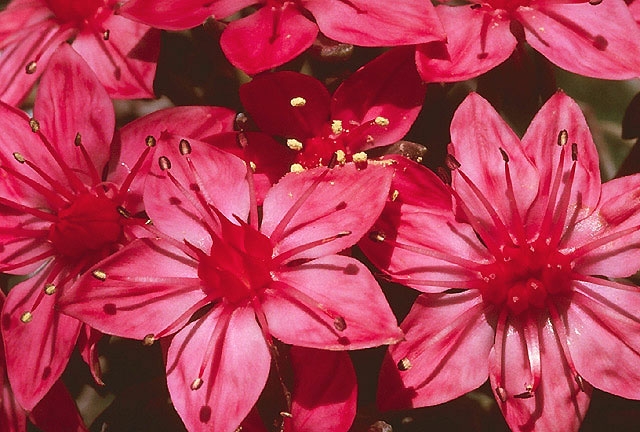Chihuahua-Flower
(Graptopetalum bellum)
Chihuahua-Flower (Graptopetalum bellum)
/
/

Public domain
Public domain
Image By:
Public domain
Recorded By:
Copyright:
Public domain
Copyright Notice:
Photo by: Public domain | License Type: Public domain | License URL: https://creativecommons.org/public-domain/ | Uploader: PDH | Publisher: Wikimedia Commons | Title: Tacitus_bellus.jpg | Notes: {{Information |Description= ''Grevillea australis'' Baw Baw National Park, Victoria, Australia |Source= digital photograph by author |Date= 2009-12-20 |Author= [[:en:User:Melburnian|Melburnian]] |Permission= see below |other_versions= }} == {{int:license |























Estimated Native Range
Summary
Graptopetalum bellum, commonly known as Chihuahua-Flower or Tacitus bellus, is an evergreen succulent native to rocky outcrops and cliffs in northwestern Mexico. It is a compact plant that typically reaches only up to 6 inches (15 cm) tall and spreads up to 8 inches (20 cm) wide. Its rosettes of fleshy, spoon-shaped leaves are pale green to gray-green and provide a striking backdrop for the showy flowers. The plant produces star-shaped, deep pink to red flowers with five petals, each around 1 inch (2.5 cm) in diameter, with dark pink stamens and white anthers, blooming in spring. The flowers are particularly attractive and can add a splash of color to rock gardens or succulent collections.
Graptopetalum bellum is valued for its low maintenance, drought tolerance, and the vibrant color of its flowers. It is often used in rock gardens, as a ground cover, in containers, or as part of a succulent display. This species thrives in partial shade, reflecting its cliff-dwelling origins, and requires well-draining, porous soil. It is best to water sparingly, only enough to prevent shriveling, and to avoid overwatering, especially during winter, to prevent root rot. Fertilization should be minimal, using a cactus or succulent-specific fertilizer at half the recommended rate during the growing season. While it can tolerate brief cold spells down to −15 °C (5 °F) if kept dry, it generally prefers warmer temperatures. Propagation is easily achieved by division of offshoots, rooting of individual leaves, or from seed. Graptopetalum bellum has been recognized with the Royal Horticultural Society’s Award of Garden Merit for its ornamental qualities.CC BY-SA 4.0
Graptopetalum bellum is valued for its low maintenance, drought tolerance, and the vibrant color of its flowers. It is often used in rock gardens, as a ground cover, in containers, or as part of a succulent display. This species thrives in partial shade, reflecting its cliff-dwelling origins, and requires well-draining, porous soil. It is best to water sparingly, only enough to prevent shriveling, and to avoid overwatering, especially during winter, to prevent root rot. Fertilization should be minimal, using a cactus or succulent-specific fertilizer at half the recommended rate during the growing season. While it can tolerate brief cold spells down to −15 °C (5 °F) if kept dry, it generally prefers warmer temperatures. Propagation is easily achieved by division of offshoots, rooting of individual leaves, or from seed. Graptopetalum bellum has been recognized with the Royal Horticultural Society’s Award of Garden Merit for its ornamental qualities.CC BY-SA 4.0
Plant Description
- Plant Type: Succulent
- Height: 0.1-0.3 feet
- Width: 0.2-0.4 feet
- Growth Rate: Slow
- Flower Color: Pink
- Flowering Season: Summer
- Leaf Retention: Evergreen
Growth Requirements
- Sun: Part Shade
- Water: Very Low, Low
- Drainage: Fast
Common Uses
Drought Tolerant, Groundcover, Low Maintenance, Potted Plant, Rock Garden, Showy Flowers
Natural Habitat
Rocky outcrops and cliffs in northwestern Mexico
Other Names
Common Names: Rosenrosett
Scientific Names: , Graptopetalum bellum, Tacitus bellus,
GBIF Accepted Name: Graptopetalum bellum (Moran & Meyrán) D.R.Hunt